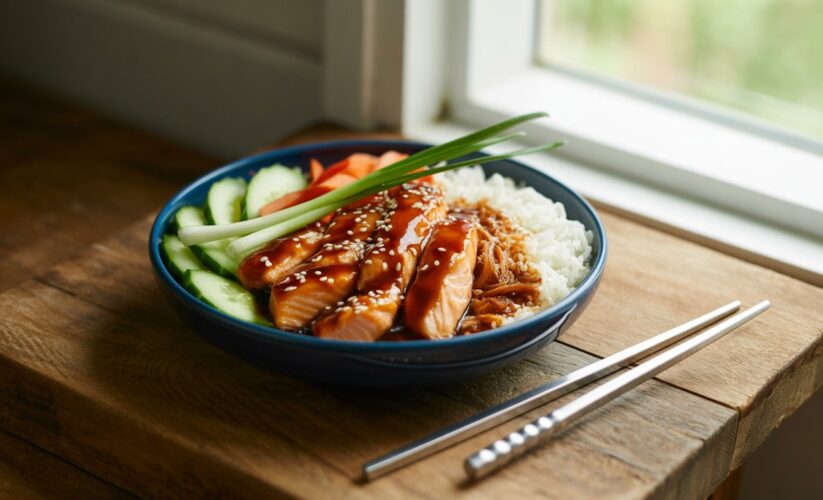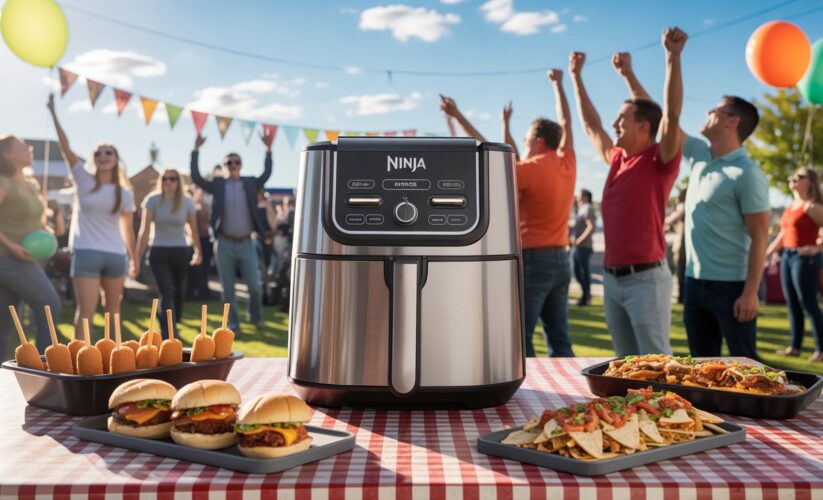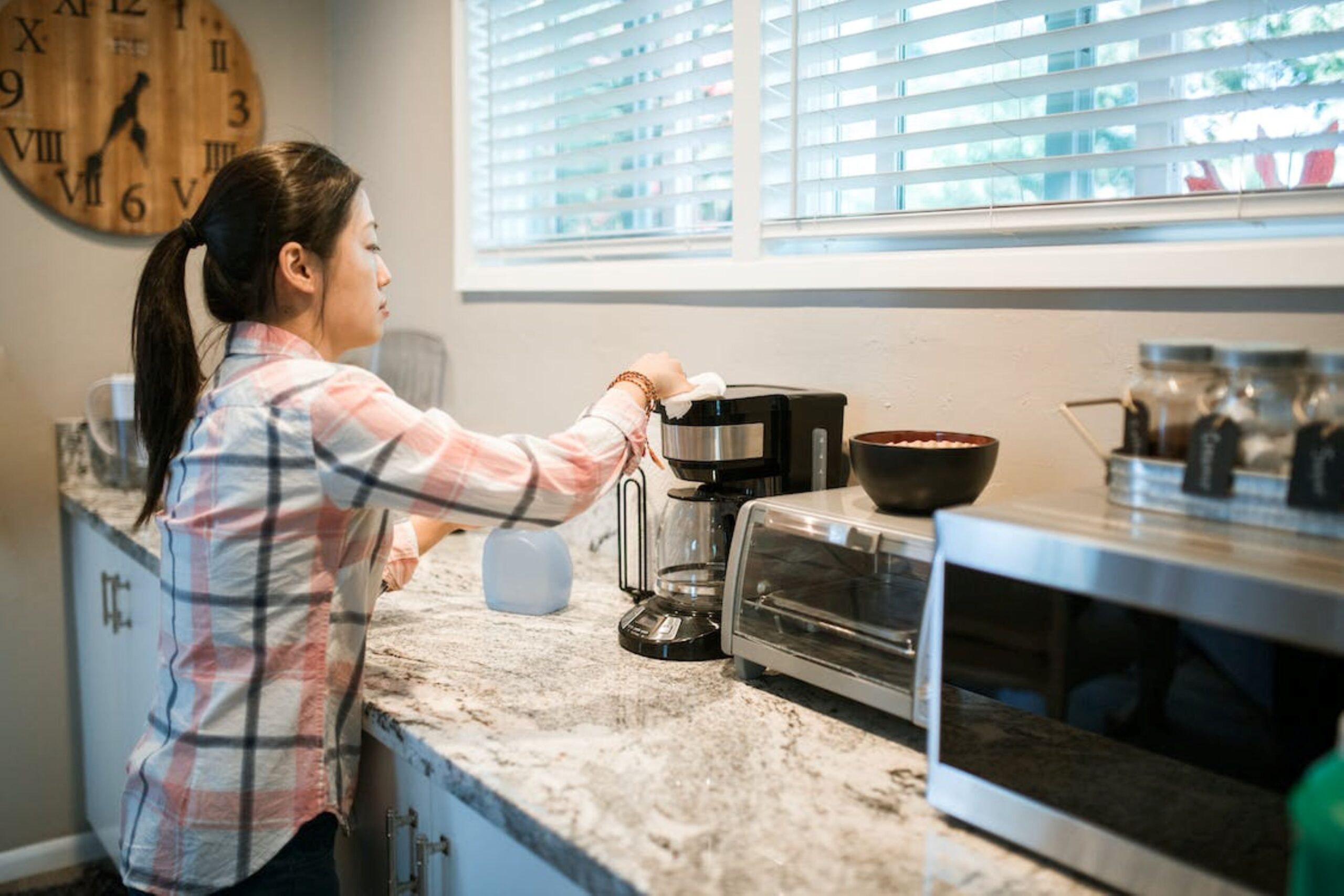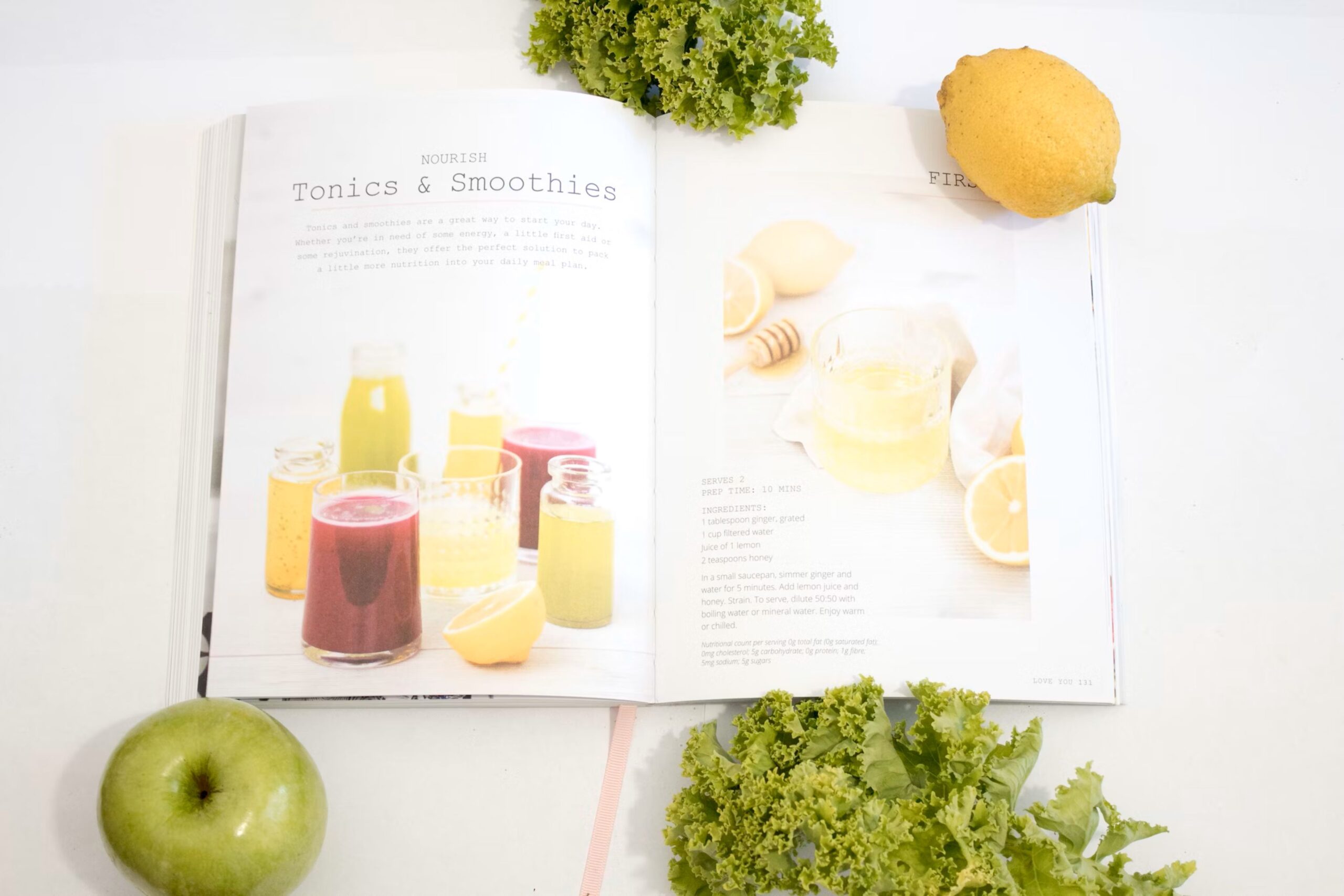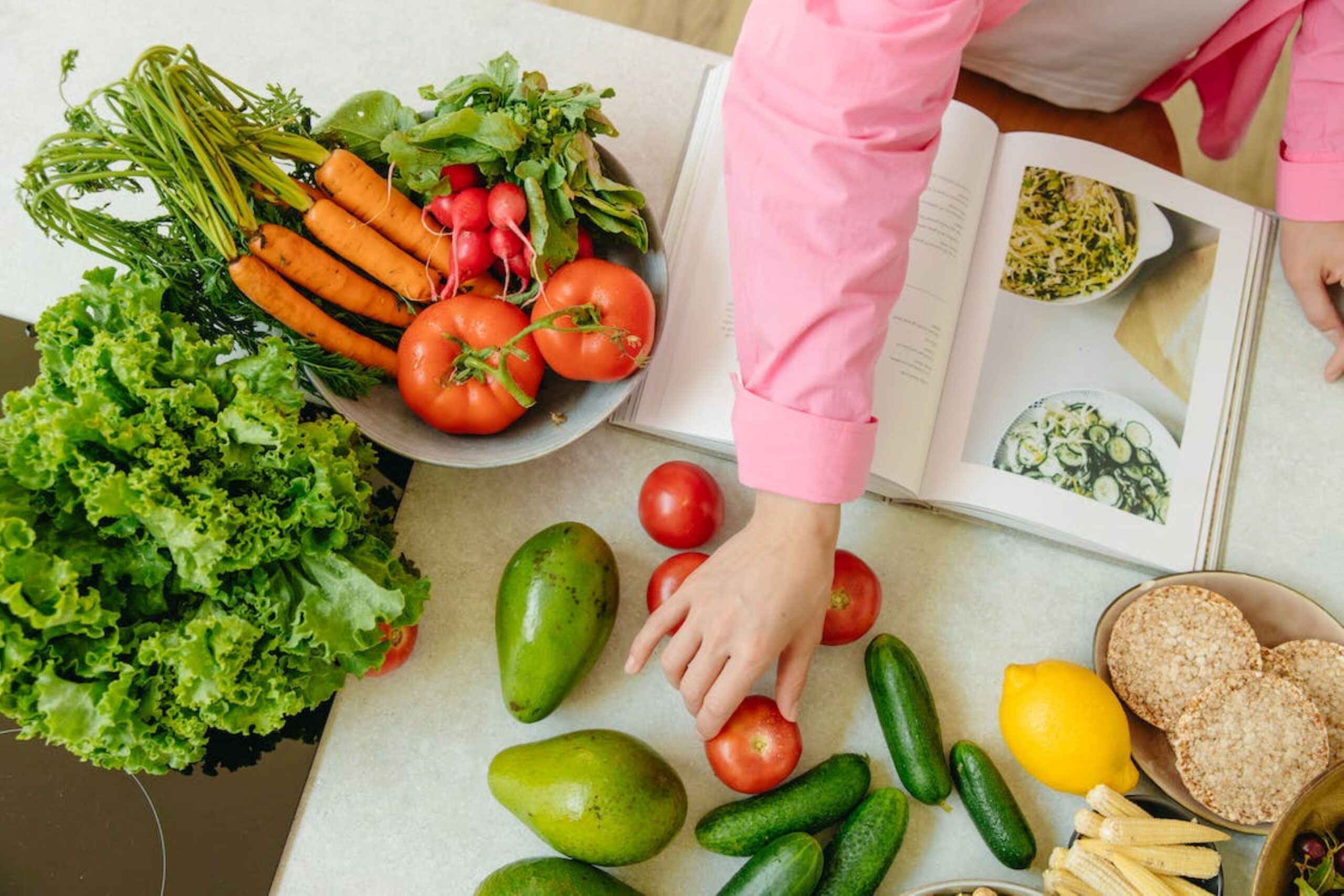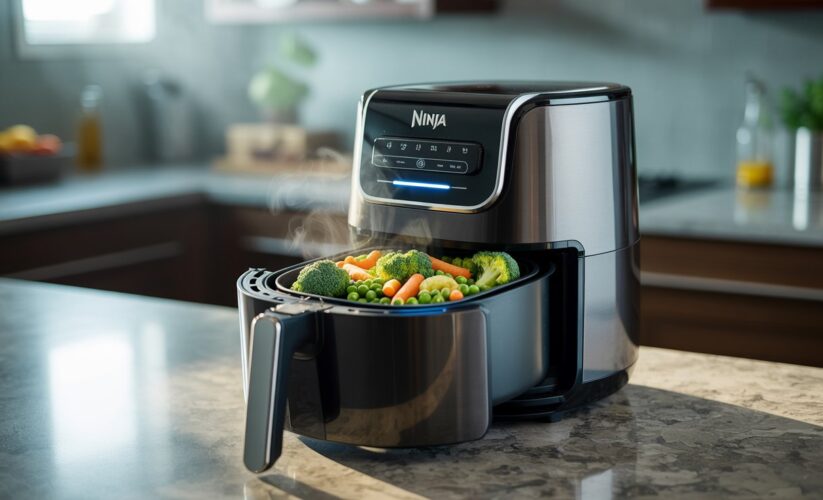
Ninja Air Fryer Frozen Vegetables Made Easy
The freezer section’s frozen vegetable bags often get overlooked, dismissed as bland backup options for busy weeknights. Yet within those frost-covered packages lies untapped potential waiting to be unleashed with the right technique and equipment. The Ninja Air Fryer has emerged as the ultimate game-changer, capable of transforming these humble frozen vegetables into restaurant-quality gourmet sides that will have dinner guests asking for recipes.
“The air fryer has revolutionized how we approach frozen vegetables, transforming what was once a soggy afterthought into crispy, flavorful masterpieces that rival restaurant-quality sides.”
– Culinary Institute of America
Key Takeaways
- Temperature Control: Different frozen vegetables require specific temperature settings (375-425°F) for optimal results
- Timing Precision: Cook times range from 8-22 minutes depending on vegetable type and desired texture
- Oil Selection: Use high-heat oils like avocado or grapeseed for best results and flavor neutrality
- Seasoning Strategy: Apply seasonings after oil coating for better adherence and flavor development
- Moisture Management: Partial thawing and proper drying techniques prevent soggy results
- Basket Arrangement: Single layers and regular shaking ensure even cooking distribution
- Finishing Techniques: Fresh herbs, citrus, and specialty salts elevate dishes from good to gourmet
- Meal Prep Friendly: Prepared vegetables store well and reheat successfully in the air fryer
- AIR CRISP TECHNOLOGY: 400℉ superheated air surrounds food for hot, crispy results with little to no oil.
- LARGE CAPACITY: The 5-QT nonstick basket and crisper plate fit up to 4 lbs of French fries or 5 lbs of chicken wings.
- 4-in-1 FUNCTIONALITY: Air Fry, Roast, Reheat, and Dehydrate.
- ALL-IN-ONE SYSTEM: Includes the Ninja Crispi PowerPod, 4-qt and 6-cup CleanCrisp glass containers, and 2 storage lids
- CRISPI POWERPOD: The power of a full-sized air fryer now in the palm of your hand
- SMALL & LARGE BATCH CONTAINERS: 6-cup container cooks a personal sized meal in 7 mins while the 4 QT fits a 4-LB chicken and veggies
- DUALZONE TECHNOLOGY WITH SMART FINISH: Features two independent 4-quart baskets allowing simultaneous cooking of different foods with separate time and temperature controls, while Smart Finish synchronizes cooking to ensure both dishes complete at the same time for perfectly coordinated family meals
- VERSATILE 4-IN-1 FUNCTIONALITY: Master Air Fry, Roast, Reheat, and Dehydrate functions in one powerful 1690-watt appliance with precise temperature control ranging from 105°F to 400°F, delivering crispy exteriors and tender interiors with up to 75% less fat than traditional frying
- GENEROUS FAMILY-SIZE CAPACITY: 8-quart total capacity with two 4-quart baskets accommodates up to 4 pounds of food, perfect for cooking family-sized meals, entertaining guests, or meal prepping multiple dishes simultaneously without compromising on quality or taste
- DIGITAL CRISP CONTROL TECHNOLOGY: Precision-controlled temperature, heat source, and airflow for ultimate versatility and optimum cooking performance.
- 8-IN-1 VERSATILITY: The ultimate meal-making machine with 8-in-1 functionality: Air Fry, Air Roast, Air Broil, Bake, Bagel, Toast, Dehydrate, and Keep Warm all in one powerful, 1800-watt appliance. The height of the interior of this machine is approximately 3″.
- LESS FAT: Eat all of your air fried favorites guilt-free with up to 75% less fat when using the Air Fry function vs. traditional deep frying. Tested against hand-cut, deep fried French Fries.
The Frozen Vegetable Revolution
Modern air fryer technology has completely shifted the landscape of frozen vegetable preparation. Gone are the days of soggy, flavorless vegetables that emerge from traditional steaming or microwave methods. The Ninja Air Fryer’s powerful circulation system creates the perfect environment for achieving that coveted crispy exterior while maintaining tender, perfectly cooked interiors.
The transformation begins with understanding how frozen vegetables behave under intense, circulating heat. Unlike fresh vegetables that contain natural moisture, frozen varieties have undergone cellular changes during the freezing process. When exposed to the Ninja Air Fryer’s rapid air technology, this creates unique opportunities for texture development that simply cannot be achieved through conventional cooking methods.
Essential Preparation Techniques
The Foundation: Proper Thawing Strategy
The key to gourmet results lies in the preparation phase. Most home cooks make the critical error of cooking frozen vegetables directly from their frozen state, leading to uneven cooking and excess moisture. The optimal approach involves a brief partial thaw period, allowing surface moisture to evaporate while maintaining the vegetable’s structural integrity.
For vegetables like broccoli florets, cauliflower, and Brussels sprouts, removing them from the freezer fifteen minutes before cooking allows for surface defrosting without complete thawing. This technique prevents the common pitfall of mushy vegetables while ensuring even heat distribution throughout the cooking process.
Seasoning Mastery
Frozen vegetables present unique seasoning challenges due to their moisture content and cellular structure. Traditional seasoning methods often result in spices sliding off or becoming diluted. The solution involves creating seasoning layers that bond with the vegetable surface during the air frying process.
Start with a light coating of high-heat oil – avocado or grapeseed work exceptionally well due to their neutral flavor profiles and high smoke points. This creates the foundation for spice adhesion while promoting the Maillard reaction that develops complex flavors and appealing textures.
The spice blend application requires strategic timing. Apply dry seasonings immediately after oil coating, allowing them to create a paste-like consistency that adheres during cooking. Popular combinations include garlic powder, smoked paprika, and dried herbs for Mediterranean profiles, or cumin, chili powder, and lime zest for Southwest-inspired sides.
Advanced Flavor Development Techniques
The Umami Enhancement Method
Elevating frozen vegetables to gourmet status requires understanding umami development. Parmesan cheese, nutritional yeast, or mushroom powder applied during the final cooking minutes creates depth and complexity that rivals upscale restaurant preparations.
The timing of umami additions proves crucial. Adding these ingredients too early results in burning, while too late application fails to integrate properly. The sweet spot occurs during the final three to four minutes of cooking, allowing sufficient time for flavor melding without compromising the crispy texture.
Temperature and Timing Precision
Different frozen vegetables require specific temperature and timing combinations to achieve optimal results. Root vegetables like carrots and potatoes benefit from higher temperatures (425°F) and longer cooking times (18-22 minutes), while delicate vegetables such as asparagus or snap peas perform better at moderate temperatures (375°F) for shorter durations (8-12 minutes).
The Ninja Air Fryer’s preset functions provide excellent starting points, but customization based on personal preference and specific vegetable types yields superior results. Monitoring texture development through periodic checking prevents overcooking while ensuring thorough heating.
Gourmet Transformation Recipes
Crispy Brussels Sprouts with Balsamic Glaze
Transform frozen Brussels sprouts into a sophisticated side worthy of fine dining establishments. Begin with halved frozen sprouts, lightly oiled and seasoned with sea salt, black pepper, and garlic powder. Cook at 400°F for 12-15 minutes, shaking the basket every five minutes for even browning.
During the final minutes, drizzle with balsamic reduction and sprinkle with toasted pine nuts. The result rivals high-end steakhouse preparations while requiring minimal effort and time investment.
Mediterranean Cauliflower Steaks
Frozen cauliflower florets can be transformed into elegant “steaks” through careful preparation and seasoning. Arrange larger florets in steak-like formations, brush with olive oil infused with Mediterranean herbs (oregano, thyme, rosemary), and season with sea salt and cracked pepper.
Cook at 425°F for 16-20 minutes, creating caramelized edges while maintaining tender centers. Finish with a sprinkle of feta cheese and fresh lemon juice for restaurant-quality presentation and flavor.
Asian-Inspired Honey Garlic Carrots
Frozen baby carrots become an upscale side dish through strategic seasoning and glaze application. Toss carrots with sesame oil, soy sauce, and garlic powder before air frying at 400°F for 15-18 minutes.
Create a honey garlic glaze by combining honey, rice vinegar, minced garlic, and red pepper flakes. Brush onto carrots during the final five minutes, allowing caramelization while preventing burning. Garnish with sesame seeds and sliced scallions for professional presentation.
Overcoming Common Challenges
Moisture Management
Excess moisture represents the primary obstacle in achieving crispy, gourmet results with frozen vegetables. Several strategies effectively combat this challenge. Pre-cooking preparation should include patting vegetables dry with paper towels after partial thawing. Additionally, avoiding overcrowding the air fryer basket ensures proper air circulation and moisture evaporation.
For particularly moisture-heavy vegetables like frozen spinach or zucchini, consider pre-cooking moisture removal techniques. Lightly salting and allowing drainage for ten minutes before oil and seasoning application draws out excess water, resulting in superior texture and flavor concentration.
Even Cooking Distribution
Achieving uniform cooking across all vegetable pieces requires attention to size consistency and basket arrangement. Cut larger frozen pieces to match smaller ones, ensuring similar cooking times throughout the batch. Arrange vegetables in single layers when possible, rotating or shaking the basket every five to seven minutes for even heat exposure.
Seasoning Adherence
Frozen vegetables’ smooth surfaces can prevent proper seasoning adherence, leading to bland results despite generous spice applications. Create texture through light scoring or surface abrasion before seasoning. Additionally, allowing seasoned vegetables to rest for five minutes before cooking enables better spice integration.
Advanced Techniques for Culinary Excellence
Layered Cooking Approach
Professional-level results often require staged cooking processes. Begin with base vegetables that require longer cooking times, adding quick-cooking varieties during the final minutes. This technique allows preparation of complex mixed vegetable dishes while maintaining individual vegetable integrity and optimal textures.
Finishing Touches
The difference between good and gourmet often lies in finishing techniques. Fresh herb additions, citrus zests, flavored oils, or artisanal salt varieties applied immediately before serving elevate simple frozen vegetables into sophisticated sides worthy of special occasions.
Consider creating compound butters or flavored oils specifically for finishing frozen vegetable dishes. These preparations can be made in advance and stored, providing instant gourmet enhancement for weeknight meals.
Nutritional Benefits and Health Considerations
Frozen vegetables often retain superior nutritional content compared to fresh varieties that have traveled long distances or sat in storage. The air frying process preserves these nutrients while creating appealing textures that encourage increased vegetable consumption.
The minimal oil requirements of air frying maintain the health benefits of vegetables while adding appealing flavors and textures. This cooking method supports dietary goals while satisfying cravings for crispy, indulgent foods.
Storage and Meal Prep Integration
Prepared air-fried frozen vegetables store well for several days when properly cooled and refrigerated. This makes them excellent candidates for meal prep strategies, allowing busy individuals to enjoy gourmet-quality sides throughout the week with minimal daily preparation.
Reheat prepared vegetables in the air fryer for two to three minutes to restore crispiness, avoiding the sogginess associated with microwave reheating methods.
Building Your Frozen Vegetable Arsenal
Developing a well-stocked frozen vegetable collection enables spontaneous gourmet side creation. Focus on versatile varieties like broccoli, cauliflower, Brussels sprouts, and mixed root vegetables that respond well to air frying techniques while offering broad flavor pairing possibilities.
Consider seasonal frozen options that provide year-round access to peak-season flavors and nutrition. These selections often offer superior quality compared to out-of-season fresh alternatives while maintaining budget-friendly pricing.
Step-by-Step Instructions for Perfect Results
Basic Frozen Vegetable Air Frying Method
Step 1: Preparation Remove frozen vegetables from freezer and let sit for 15 minutes for partial thawing. Pat dry with paper towels to remove excess moisture.
Step 2: Preheat Your Ninja Air Fryer Set temperature to 400°F and preheat for 3-5 minutes. This ensures even cooking from the start.
Step 3: Oil Application Drizzle 1-2 teaspoons of high-heat oil (avocado or grapeseed) over vegetables in a mixing bowl. Toss to coat evenly.
Step 4: Season Immediately Add seasonings while vegetables are still damp from oil. Popular combinations:
- Garlic powder + smoked paprika + sea salt
- Italian herbs + parmesan cheese + black pepper
- Cumin + chili powder + lime zest
Step 5: Arrange in Basket Place seasoned vegetables in air fryer basket in a single layer. Avoid overcrowding for optimal air circulation.
Step 6: Cook with Intervals Cook according to vegetable type:
- Delicate vegetables (asparagus, snap peas): 375°F for 8-12 minutes
- Medium vegetables (broccoli, cauliflower): 400°F for 12-16 minutes
- Dense vegetables (carrots, potatoes): 425°F for 18-22 minutes
Step 7: Shake and Check Shake basket every 5 minutes and check for doneness. Look for golden-brown edges and tender texture.
Step 8: Add Finishing Touches During final 2-3 minutes, add any cheese, nuts, or delicate seasonings that might burn if added earlier.
Step 9: Final Seasoning Remove from air fryer and immediately add fresh herbs, citrus zest, or finishing salt while vegetables are hot.
Step 10: Serve Immediately Transfer to serving dish and enjoy while crispy. If not serving immediately, store in warm oven at 200°F for up to 30 minutes.
Advanced Brussels Sprouts Recipe – Complete Method
Step 1: Prep Brussels Sprouts Use 1 pound frozen Brussels sprouts, halved if large. Let thaw partially for 15 minutes, then pat completely dry.
Step 2: Create Base Seasoning Mix 2 tablespoons olive oil, 1 teaspoon garlic powder, 1/2 teaspoon sea salt, 1/4 teaspoon black pepper in large bowl.
Step 3: Coat and Season Add Brussels sprouts to bowl and toss until evenly coated. Let sit 5 minutes for flavors to absorb.
Step 4: First Cook Phase Air fry at 400°F for 10 minutes, shaking basket after 5 minutes for even browning.
Step 5: Add Enhancement Open basket, drizzle with 1 tablespoon balsamic vinegar, and sprinkle 2 tablespoons pine nuts.
Step 6: Final Cook Phase Continue cooking 5-7 minutes until Brussels sprouts are golden brown and crispy on edges.
Step 7: Finish and Serve Remove from air fryer, immediately sprinkle with 2 tablespoons grated parmesan cheese and fresh cracked pepper.
Troubleshooting Steps
If Vegetables Are Soggy:
- Check if basket was overcrowded – cook in smaller batches
- Increase temperature by 25°F and reduce time slightly
- Ensure vegetables were properly dried before cooking
- Use less oil next time (maximum 2 teaspoons per batch)
If Vegetables Are Burning:
- Lower temperature by 25°F and increase cooking time
- Check if delicate seasonings were added too early
- Shake basket more frequently (every 3-4 minutes)
- Move vegetables to center of basket away from heating element
If Seasonings Won’t Stick:
- Ensure vegetables are slightly damp when seasoning
- Create seasoning paste by mixing spices with small amount of oil first
- Let seasoned vegetables rest 5-10 minutes before cooking
- Press seasonings gently into vegetable surfaces
Conclusion
The Ninja Air Fryer has fundamentally changed the possibilities for frozen vegetable preparation, transforming convenience foods into gourmet experiences that rival restaurant preparations. Through proper technique, strategic seasoning, and creative finishing touches, even the most basic frozen vegetables can become the star of any meal.
The journey from frozen bag to gourmet plate requires understanding each vegetable’s unique characteristics and responding with appropriate cooking techniques. Success lies in embracing experimentation while building upon these foundational principles.
Whether preparing weeknight dinners or special occasion meals, these techniques provide the tools necessary to consistently create exceptional vegetable sides that satisfy both nutritional needs and culinary desires. The convenience of frozen vegetables combined with air fryer technology offers unlimited possibilities for creative home cooks ready to explore new flavor territories.
Frequently Asked Questions
Q: Do I need to thaw frozen vegetables before putting them in the Ninja Air Fryer?
A: Partial thawing is recommended for best results. Remove vegetables from freezer 15 minutes before cooking to allow surface defrosting while maintaining structural integrity. Complete thawing often leads to mushy textures.
Q: What’s the best oil to use with frozen vegetables in an air fryer?
A: Avocado oil and grapeseed oil work best due to their high smoke points and neutral flavors. Use just enough to lightly coat the vegetables – typically 1-2 teaspoon for a full basket.
Q: How can I prevent my seasonings from falling off during cooking?
A: Apply seasonings immediately after oiling while vegetables are still damp. This creates a paste-like consistency that adheres better during cooking. Allow seasoned vegetables to rest for 5 minutes before air frying.
Q: Why do my frozen vegetables turn out soggy even in the air fryer?
A: Common causes include overcrowding the basket, using too much oil, cooking at too low temperature, or not managing excess moisture properly. Ensure single layers, proper temperature settings (375-425°F), and pat vegetables dry before seasoning.
Q: Can I cook different types of frozen vegetables together in the air fryer?
A: Yes, but use a layered cooking approach. Start with vegetables requiring longer cook times (root vegetables), then add quicker-cooking varieties (leafy greens, asparagus) during the final minutes. This ensures all vegetables are properly cooked without over-cooking delicate varieties.
Last update on 2025-10-15 / Affiliate links / Images from Amazon Product Advertising API
*We may earn a commission for purchases made using our links. Please see our disclosure to learn more.





